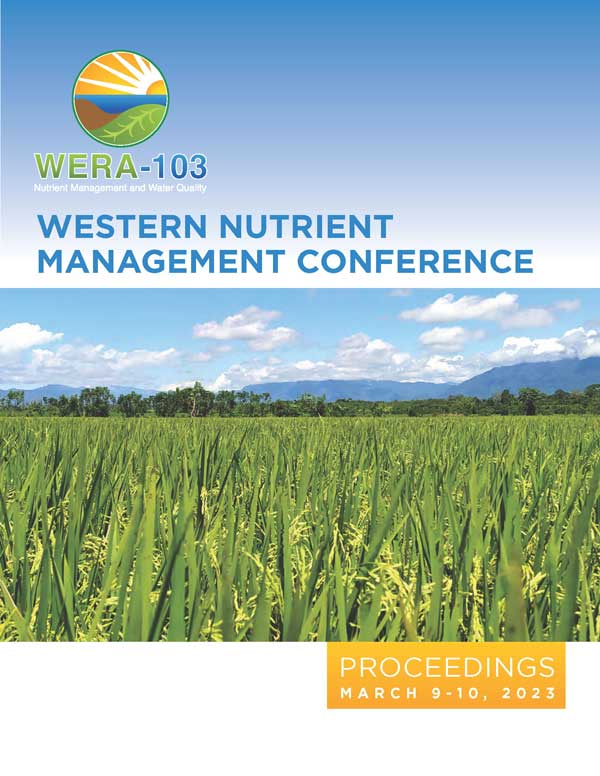Download the Conference Proceedings
Proceedings
Year
| Filter results4 paper(s) found. |
|---|
1. Development of Leaf Sampling and Interpretation Methods for Almond and Development of a Nutrient Budget Approach to Fertilizer Management in AlmondA five year research project on the use of N in orchards crops has been conducted to 1) to develop early season sampling protocols, and 2) to determine the response of Almond to various rates and sources of nitrogen (N) and potassium (K) fertilizers, 3) to develop nutrient demand curves and 4) to conduct a long term assessment of nutrient use efficiency with the goal of improving fertilizer management. Leaf and nut samples were taken at 5 stages of development throughout five seasons to deter... P.H. Brown, S. Saa, S. Muhammad, B. Sanden |
2. Efficient N Fertility and Irrigation Management in Vegetable and Berry ProductionNitrogen (N) fertility and irrigation management for vegetable and berry production has historically been done on an ‘agronomic’ basis, with the sole focus on producing the optimal crop. For these crops N fertilizer and water costs are a small portion of overall production costs, and an even smaller portion of crop value; consequently, these inputs have not been scrutinized as closely as they have been for lower value crops. However, throughout the West concern over environmental ... T. Hartz, R. Smith, M. Cahn |
3. Irrigation and Nitrogen Management Web-based Software for Lettuce ProductionLettuce growers on the central coast of California are under increased regulatory pressure to reduce nitrate loading to ground and surface water supplies. Two tools available to farmers to improve nitrogen use efficiency of lettuce are the quick nitrate soil test (QNST) for monitoring soil mineral nitrogen levels and weather-based irrigation scheduling for estimating water needs of the crop. We developed a web-based software application, called CropManage (https://ucanr.edu/cropmanage), to fa... M. Cahn, R. Smith, T. Hartz, B. Noel |
4. Nitrogen Transformations in Flooded Agroecosystems: a Case Study with Taro (Colocassia Esculenta)Wetland agriculture covers an estimated 170 million ha and contributes significantly to global food supply. Nitrogen fertilizers are subject to numerous potential transformation pathways in flooded systems. The present research was focused on improving our understanding of N transformations in a flooded agricultural system by addressing the following two broad objectives: 1) determine whether the presence of anammox bacteria and its activity contribute significantly to N losses, and 2) evalua... J. Deenik, C. Penton, B. Popp, G. Bruland, P. Engstrom, J. Mueller, J. Tiedje |
